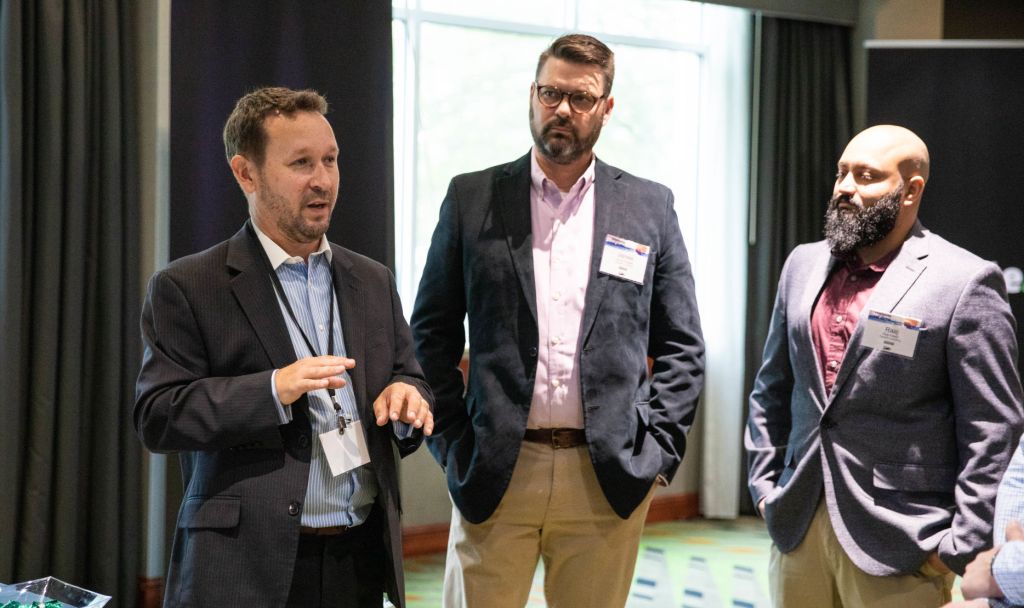State public health conference makes return in Bowling Green
Published 12:15 am Friday, April 22, 2022

- Deloitte Manager Mike Daggitt, left, explains the benefits of the Deloitte HealthPrism, a health analytics platform comprised of social drivers of health data and predictive models to identify populations at risk for disease, chronic conditions or health inequities, with his coworkers Specialist Leader James Howgate, center, and Consultant Raaj Parekh, right, during the 74th annual Kentucky Public Health Association Educational Conference at the Sloan Convention Center in Bowling Green, Ky., on Thursday, April 21, 2022. (Grace Ramey/photo@bgdailynews.com)
For the first time in more than two years, the Kentucky Public Health Association’s annual conference returned to an in-person setting and was hosted in Bowling Green at the Sloan Convention Center.
The conference brings together hundreds of public health professionals from across Kentucky and surrounding states.
The event opened Wednesday and runs through Friday.
One of the highlights from this year’s event was a presentation showcasing new predictive health technology identifying public health threats and opportunities to improve initiatives in specific communities and neighborhoods.
The technology is called HealthPrism and is provided by Deloitte. The advanced analytics platform uses about 10 years of public data.
Janarae Conway, Barren River District Health Department branch manager for disaster preparedness and response, was intrigued by the database and said it could be beneficial if used locally.
“I could see where this product could be used to better plan how to reach out to areas that are more at-risk for diseases,” Conway said. “Also it could be useful for disaster preparedness.
“Time constraints make it really hard for us to go out and find all of that data,” she said. “If you have something like what they are using – it makes it a whole lot easier for us.”
Deloitte Manager Mike Daggitt said HealthPrism aggregates around 1,700 different data points to create models pointing to different medical conditions people may have.
Some of the program’s predictive models concentrate on infectious diseases, chronic conditions and health issues like food and housing insecurity.
Most recently, HealthPrism has been used to pinpoint areas at high risk for COVID-19 or high vaccine hesitancy.
“The idea is that your social determinants are a big factor in dictating your health outcomes,” Daggit said. “It’s just as much as what’s on the paper about you medically, but it’s more so about the decisions you make in your everyday life. The idea with these predictive models is that you can help communities before these communities get too far along.”
Daggit said the system was used in a midwestern state to determine how many people were actually eligible for SNAP benefits.
He said HealthPrism found 290,000 households in that state likely eligible for SNAP that were not receiving those benefits.
“We can help our clients look at areas across the state that are underserved,” Daggitt said. “What we do is that we go to all of those data vendors out there that are gathering publicly available data. We are taking what we have and we are starting to build new models like food and housing insecurity. It’s meant for targeted outreach that’s strategically driven.”
Conway said one way the model could be used is to pinpoint specific neighborhoods in the Barren River region that are lagging behind in vaccination rates.
“We would know who to specifically talk with and provide that information on vaccines,” she said. “The data shows which places to focus on.”
– Follow reporter John Reecer on Twitter @JReecerBGDN or visit bgdaily news.com.




